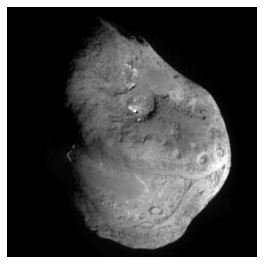What Is Albedo? What is Earth's Albedo?
Albedo : Definition
The proportion of solar radiation which is reflected by a non-luminous body is known as albedo. It is the measure of how reflective a body is. Dark colored objects absorb most of the solar radiation which is incident on them and hence have a low albedo, whereas light-colored ones have a high albedo, as they reflect most of the radiation incident upon them.
To find the albedo of any object, the amount of electromagnetic radiation incident upon it is measured first, then the amount of radiation diffusely reflected is measured. The ratio of the latter to the former gives the albedo of that object. It has no dimensions. Albedo is one for a perfectly white object and is zero for a perfectly black object; all objects have an albedo between this range. There are different types of albedo, including Astronomical Albedo, Terrestrial Albedo and Single Scattering Albedo.
Astronomical Albedo
Astronomical albedo is the measure of the reflectivity of planets (except Earth), asteroids and other celestial bodies. Albedo of the Moon is .07 (some sources state that it is as high as 12%), that is, only 7% of the solar radiation which reaches the Moon is reflected back into space and an awesome 93% is absorbed by the Moon’s surface! Thus the albedo is an indicator of the surface and atmospheric characteristics of a celestial body and therefore is important in the study of astronomy.
Saturn’s moon, Enceladus, has the highest albedo in our Solar System at .99 ( the above picture is the image of Enceladus) whereas the some of the lowest albedos observed are for the nucleus of a comet and it is typically about .04 ( the picture below is the image of Comet Tempel 1’s nucleus).

The Albedo of celestial bodies is studied continuously to monitor the changes occurring on them. A number of objects like planets and asteroids have a heterogeneous material called ‘regolith’, which covers the solid rock under its surface. Scientists study the variation in the value of albedo with the phase angle of the light to determine the characteristics of the regolith layer.
There are two other albedo numbers that can be measured from an object: Bond Albedo and Geometric Albedo.
-
Bond Albedo is the ratio of the total incident electromagnetic radiation at all phase angles on an object, to that of the total radiation scattered by it. This gives information on the energy of that object.
-
Geometric Albedo is the fraction of the actual brightness measured at zero phase angle (meaning that the observation is made from the light source) to that of an ideal object with the same cross section.
Terrestrial Albedo
The measurement of Earth’s albedo is known as Terrestrial Albedo and it is around 0.31, that is, about two-thirds of the solar radiation reaching the Earth gets absorbed by various elements that make up the Earth. This figure is dependent on many factors like clouds, ocean, desert, forests etc. that make up our planet. Since regions like forests and oceans are darker in color, they have a lower albedo, whereas ice and white clouds have a high albedo and this averages out to give the value of 0.31.
Single Scattering Albedo
Single Scattering Albedo is the ratio of the efficiency of an object to scatter radiation to the sum of the radiation scattered and absorbed by that object. It is the measure of the scattering of electromagnetic radiation by small particles, this varies with the size and refractive index of the particle and the wavelength of the incident radiation.
Albedo And Global Warming
The variation in the average albedo of Earth has a significant influence on the temperature of the Earth. If the average albedo is lower than the previous year’s albedo, it indicates that amount of radiation absorbed is higher and this results in the increase in the temperature of the Earth. Earth’s albedo is continuously measured using satellites to monitor the already grave situation of global warming.
Source
https://en.wikipedia.org/wiki/Albedo
Images:
https://www.knowledgerush.com/wiki_image/8/88/Enceladus_moon_(large).jpg
